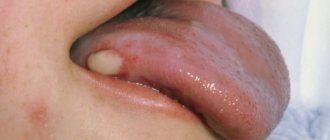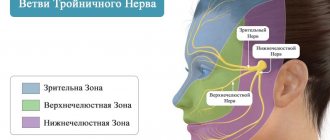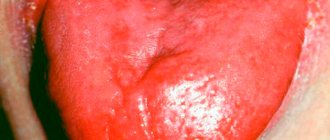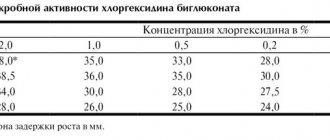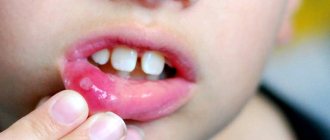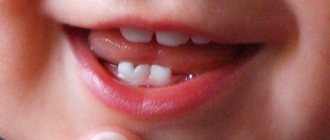What to do if a child develops acetonemic syndrome? Causes and treatment recommendations
Acetonemic syndrome is expressed by symptoms that are caused by a metabolic failure. An unpleasant condition occurs when ketone bodies accumulate in the blood. Acetone crises can often occur: dehydration, repeated vomiting, the smell of acetone from the mouth, low-grade fever, abdominal syndrome.
The disease is diagnosed on the basis of certain symptoms, as well as tests - ketonuria, elevated urea levels, and electrolyte imbalance are determined. In the case of an acetonemic crisis, it is important for the child to undergo infusion therapy, give a cleansing enema, and put him on a diet containing easily digestible carbohydrates as early as possible.
What it is?
Acetonemic syndrome is a condition that occurs when metabolic processes in a child’s body are disrupted, a kind of failure in metabolic processes. At the same time, no malformations of the organs, no violations in their very structure are detected, it’s just that the functioning of, for example, the pancreas and liver is not regulated.
This syndrome itself is one of the manifestations of the so-called neuro-arthritic anomaly of the constitution (neuro-arthritic diathesis is the old name for the same condition). This is a certain set of character traits combined with a certain functioning of the child’s internal organs and nervous system.
What are the reasons for the violation
The most likely cause of the acetone odor is diabetes. With this disease, there is a lack of insulin as a result of metabolic disorders. The smell will be the first sign of this disease, as will lethargy, apathy, fatigue and other manifestations of intoxication.
Another factor is disruption of the hepatobiliary system and kidneys. They remove toxic substances from the body. In various diseases, organ function is disrupted and harmful components, including acetone, accumulate in tissues.
An acetone odor is noted in renal failure. This phenomenon is also present during fasting.
One of the most dangerous signs will be the appearance of odor against the background of thyroid pathologies. With hyperthyroidism, increased hormone synthesis occurs, which, with the right approach, can be eliminated with medications. In some cases, there is a critical deviation from the norm, which causes increased metabolism.
The infectious process can also be manifested by an acetone odor. This is the result of protein decompositions. Therefore, during infections, it is recommended to drink more to remove acetone from the body.
Other reasons may be:
- poor oral hygiene;
- smoking;
- dry mouth;
- binge eating;
- dental diseases.
Causes
Acetone syndrome occurs more often in children, but also occurs in adults. Its reasons include:
- kidney disease - in particular renal failure;
- deficiency of digestive enzymes - hereditary or acquired;
- congenital or acquired disorders of the endocrine system;
- diathesis – neurogenic and arthritic;
- dyskinesia of the bile ducts.
In infants, a similar condition may be a consequence of late gestosis in pregnancy or nephropathy.
External factors causing acetone syndrome:
- fasting, especially long-term;
- infections;
- toxic effects - including intoxication during illness;
- digestive disorders caused by malnutrition;
- nephropathy.
In adults, the most common cause of accumulation of ketone bodies is diabetes mellitus. Lack of insulin blocks the entry of glucose into the cells of organic systems, which accumulates in the body.
What is acetone syndrome or acetone in a child?
The first thing to remember: acetone in a child is not a disease (not associated with a viral or bacterial infection), but a signal that the body has run out of glucose and there is an excess of ketone bodies in the blood. Ketones are a group of substances formed in the liver, products of incomplete oxidation of fats in the form of acetone and similar compounds.
How does acetone occur?
A child’s body is structured the same as an adult’s, but individual organs are not yet working at full capacity. Carbohydrates obtained from food are processed in the stomach and glucose enters the blood, most of which is used for energy, and some accumulates in the liver in the form of glycogen.
The supply of glucose (glycogen) in both adults and children is actively consumed with increased physical and mental stress, but in children it is much less, so it runs out faster. Fats are used, the breakdown of which also produces a small amount of energy, but at the same time ketones appear. If the child’s body does not receive glucose on time, fats will begin to break down too actively, and a large amount of ketones will be formed.
Quickly spreading through the blood throughout the body, they poison it. Acetone irritates the vomiting center and causes constant (acetonemic) vomiting, the smell of acetone appears on the breath and acetone in the urine, and there is a danger of dehydration.
What contributes to the appearance of acetone in a child’s urine and blood?
- The main reasons for acetone:
- unbalanced diet
- predominance of fats and proteins in the child’s food and lack of glucose; - overeating and starvation;
- enzymatic deficiency
- carbohydrates are poorly absorbed; - increased glucose consumption
- increased physical and mental stress, stress, injury, infectious diseases, especially accompanied by diarrhea and vomiting.
Symptoms
Acetonemic syndrome often occurs in children with constitutional abnormalities (neuroarthritic diathesis). Such children are distinguished by increased excitability and rapid exhaustion of the nervous system; they have a thin physique, are often excessively fearful, suffer from neuroses and restless sleep.
At the same time, a child with a neuro-arthritic constitutional anomaly develops speech, memory and other cognitive processes faster than his peers. Children with neuro-arthritic diathesis are prone to impaired metabolism of purines and uric acid, therefore in adulthood they are susceptible to the development of urolithiasis, gout, arthritis, glomerulonephritis, obesity, and type 2 diabetes mellitus.
Symptoms of acetone syndrome:
- The child's breath smells of acetone. The same smell comes from the baby's skin and from his urine.
- Dehydration and intoxication, pale skin, the appearance of an unhealthy blush.
- The presence of vomiting, which can occur more than 3-4 times, especially when trying to drink or eat something. Vomiting may appear in the first 1-5 days.
- Worsening of heart sounds, arrhythmia and tachycardia.
- Lack of appetite.
- Increased body temperature (usually up to 37.50C-38.50C).
- As soon as the crisis begins, the child shows anxiety and agitation, after which he becomes lethargic, drowsy and weak. Extremely rare, but seizures may occur.
- There are cramping pains in the abdomen, stool retention, nausea (spasmodic abdominal syndrome).
Often, the symptoms of acetonemic syndrome occur due to malnutrition - a small amount of carbohydrates in the diet and a predominance of ketogenic and fatty amino acids in it. Children have an accelerated metabolism, and the digestive system is not yet sufficiently adapted, as a result of which ketolysis decreases - the process of utilization of ketone bodies slows down.
Acetone syndrome in children
When a large number of ketone bodies (acetone and acetoacetic acid) accumulate in the child’s blood, the child develops an acetonemic crisis.
Recurrence of crises indicates the presence of acetonemic syndrome in the child.
Acetonemic syndrome is not a disease, but an extreme manifestation of the characteristics of a child’s body, which occurs as an inadequate reaction to ordinary external stimuli. There are primary and secondary acetonemic syndrome.
Secondary syndrome accompanies a number of diseases: diabetes mellitus, infectious toxicosis, traumatic brain injury, brain tumors and others.
Primary acetonemic syndrome
Develops in children from the first year of life and can be accompanied until 10-12 years of age.
As a rule, such children experience neuro-arthritic diathesis (NAD).
NAD is based on a violation of purine metabolism as a result of liver enzyme deficiency. Excess uric acid increases the excitability of the nervous system. Children with NAD immediately after birth are characterized by sleep disturbances, excitability, fearfulness, and do not gain enough weight. Neuropsychic development, on the contrary, is ahead of age norms: children begin to talk early, are inquisitive, remember and retell stories well. From 2-3 years of age, they experience night pain in the joints, abdominal pain, biliary dyskinesia, odor intolerance, low temperature, enuresis, skin allergies, and the appearance of urate salts in the urine. Older children develop neuroses, asthenia, and vegetative-vascular dysfunction.
The most pronounced manifestation of metabolic disorders in children with NAD is an acetonemic crisis.
Many factors can contribute to its development: fear, pain, conflict, excess emotions, overheating, physical stress, nutritional errors (excess proteins and fats).
The crisis occurs suddenly or after warning signs: headache, nausea, abdominal pain, lethargy or agitation, poor appetite, smell of acetone from the mouth.
Manifestations of acetone crisis
– repeated or uncontrollable vomiting for 1-5 days;
– dehydration and intoxication;
– anxiety and excitement at the beginning of the crisis are replaced by lethargy and drowsiness;
– cramping abdominal pain, nausea;
– increase in body temperature to 37.5-38.5;
– presence of acetone in urine, vomit, and exhaled air.
Actions of parents during an acetonemic crisis
At the first bouts of vomiting, the child is shown to be hungry. Do not give large amounts of water, as this will cause more rounds of vomiting. It is necessary to do a cleansing enema with cool water at 25-26 degrees. Start feeding your child sweet tea with lemon, alkaline non-carbonated mineral waters such as Borjomi, Polyana Kvasova, complex solutions such as Rehydron, Humana Electrolyte, fructose solution (absorbed faster than glucose), and a decoction of dried fruits. Drink in small doses: 1 teaspoon every 5 minutes, alternating types of drinks. The child should drink a volume of liquid of at least 100 ml/kg of body weight per day. In addition to drinking, you can make microenemas with a warm 35-36 degrees soda solution (1 teaspoon of soda per 200 ml of water).
Monitor the level of acetone in urine using an acid test.
If it is impossible to give the child something to drink or his condition worsens, he must be hospitalized for infusion therapy.
Diet of the first days of crisis
Day one: drink only. Once the vomiting stops, you can give a cracker.
Day two: drink, crackers, rice water (to loosen stool), baked apple.
Day three: drink, crackers, liquid pureed porridge, baked apple.
Day four: drink, biscuits, porridge with water, vegetable soup.
Further expansion of the diet includes pureed water, porridge - buckwheat, oatmeal, rice, sea fish, soup with beef meatballs, turkey, omelet, kefir, steamed dishes.
Drug therapy is determined by the doctor.
Prevention of acetone syndrome
Children with acetone syndrome should not be overfed or force-fed. Meals should be frequent, 5-6 times a day. The basic principle is a hypoketogenic diet, i.e. exclusion (limitation) of foods containing purines, reducing the fat content of the diet.
From the diet, exclude soups with meat broth, veal, young poultry, offal, smoked meat, marinades, soups with fish broth, river fish (except pike perch and pike), tomatoes, champignons, baked goods, chips, chocolate, sour fruits (cherries, oranges), yogurt, full-fat cottage cheese and cheese, black tea, coffee, carbonated drinks, concentrated juices.
Often drink dried fruit compote, green tea with lemon.
For any illness, stress, stress, give glucose tablets - "ASKANOVA" from 4 years of age 4-6 tablets per day, at 7-10 years old - 6-8 tablets, from 10 years old - 10 tablets per day.
Due to the restriction of the diet in the winter-spring period, conduct courses of vitamin therapy and medicinal prophylaxis 2 times a year.
Walking often, dosing physical activity, a swimming pool is useful.
Although acetonemic crises in most children stop after 10-12 years, there remains a high probability of developing hypertension, urolithiasis, diabetes mellitus, and gout in adulthood.
In this regard, children with NAD are considered a risk group and are subject to dispensary observation.
Pediatrician of the highest category V.I. Cooper.
Diagnosis of the syndrome
Parents themselves can carry out express diagnostics to determine acetone in urine - special diagnostic strips that are sold in pharmacies can help with this. They need to be lowered into a portion of urine and, using a special scale, determine the level of acetone.
In the laboratory, in a clinical urine test, the presence of ketones is determined from “one plus” (+) to “four pluses” (++++). Mild attacks - the ketone level is + or ++, then the child can be treated at home. “Three pluses” correspond to an increase in the level of ketone bodies in the blood by 400 times, and four – by 600 times. In these cases, hospitalization is required - such an amount of acetone is dangerous for the development of coma and brain damage. The doctor must certainly determine the nature of the acetone syndrome: whether it is primary or secondary - it developed, for example, as a complication of diabetes.
At an international pediatric consensus in 1994, doctors defined special criteria for making such a diagnosis; they are divided into basic and additional.
Mandatory criteria:
- vomiting recurs sporadically, in bouts of varying intensity,
- between attacks there are intervals of the baby’s normal state,
- the duration of crises ranges from several hours to 2-5 days,
- negative laboratory, radiological and endoscopic examination results confirming the cause of vomiting as a manifestation of the pathology of the gastrointestinal tract.
Additional criteria include:
- episodes of vomiting are characteristic and stereotypical, subsequent episodes are similar to previous ones in time, intensity and duration, and the attacks themselves may end spontaneously.
- attacks of vomiting are accompanied by nausea, abdominal pain, headaches and weakness, photophobia and lethargy of the child.
The diagnosis is also made by excluding diabetic ketoacidosis (complications of diabetes), acute surgical pathology of the gastrointestinal tract - peritonitis, appendicitis. Neurosurgical pathology (meningitis, encephalitis, cerebral edema), infectious pathology and poisoning are also excluded.
Discolored stool
Hepatitis
52498 August 25
IMPORTANT!
The information in this section cannot be used for self-diagnosis and self-treatment.
In case of pain or other exacerbation of the disease, diagnostic tests should be prescribed only by the attending physician. To make a diagnosis and properly prescribe treatment, you should contact your doctor. The color of stool depends on the amount of bile pigments (products of the breakdown of hemoglobin), coloring substances contained in food and medications, admixtures of fresh or clotted blood, and metabolic products of microorganisms living in the intestines.
In the absence of strongly coloring food pigments, the color of stool is normally light to dark brown.
Stercobilin, a breakdown product of bilirubin, gives stool its brown color. A change in the color of stool from light green to yellowish-gray can occur with various diseases.
If bilirubin does not enter the gastrointestinal tract for any reason, the stool will become discolored. Such feces are called acholic. Discolored stool can have a different consistency, which is determined by the amount of water consumed, plant fiber, intestinal tone and other factors. These factors are taken into account when diagnosing liver diseases.
Possible reasons
Damage to the hepatic and bile ducts
.
If the patency of the hepatic ducts is impaired cholestasis
, which is characterized by acholic feces. Cholestasis can be caused by blockage of the ducts with small stones (cholelithiasis), blood clots, parasites (with opisthorchiasis, fascioliasis, clonorchiasis), and can also be a consequence of congenital anomalies, cicatricial stenosis, and the presence of tumors of the bile ducts. The lumen of the common bile duct may be narrowed due to tumor growth, due to inflammation and cysts of the pancreas, recurrent cholangitis, lymphadenitis due to tuberculosis, sarcoidosis, or be a consequence of surgical treatment and adhesions. In all cases, the flow of bile from the liver is impaired.
Symptoms of cholestasis are: skin itching, jaundice, discoloration of stool and dark urine; severe cases are manifested by a flu-like condition (chills and fever).
Sclerosing cholangitis
is a pathology that is also accompanied by discoloration of stool due to a violation of the outflow of bile. With this disease, sclerosis of the bile ducts occurs (replacement of healthy organ tissue with scar connective fibers) due to inflammatory processes.
Sclerosing cholangitis in most cases is accompanied by inflammatory diseases of the gastrointestinal tract (ulcerative colitis, Crohn's disease).
Patients develop jaundice of the skin, mucous membranes and sclera, itching, weakness and fatigue, weight loss, impaired motor activity due to limited mobility of the limbs (symptoms of osteoporosis).
Functional disorders of the biliary tract
. Functional dysmotility of the biliary tract - biliary dyskinesia - is one of the most common causes of changes in the color of stool. This is due to a narrowing (muscle spasm) of the lumen of the bile ducts and duodenal papilla, which regulates the flow of bile into the intestine.
Spasm can occur due to hormonal disorders, systemic diseases, pain, or after surgical interventions. In this case, the stool discoloration will not be permanent. The stool becomes light only after spastic attacks, and during the period of resumption of motility of the biliary tract, its color returns to normal.
Considering that the brown tint of stool is caused by bile pigments, any process of disruption of their synthesis or entry into the gastrointestinal tract is accompanied by a change in the color of the stool. Discolored feces do not always indicate illness: with excessive consumption of fatty foods
the usual amount of bile is not enough to process all the absorbed fats, and the feces become light in color.
In some infectious diseases
(cholera, salmonellosis, dysentery),
digestive disorders
(inadequate absorption of nutrients, irritable bowel syndrome), increased intestinal motility leads to the rapid movement of feces, which do not have time to change color.
If discolored feces persistently form, diseases of the hepatobiliary system (liver, gallbladder, hepatic and bile ducts, sphincter of Oddi) should be suspected.
Degenerative-inflammatory liver diseases (hepatitis of various etiologies, cirrhosis) affect the synthesis and metabolism of bile pigments and bilirubin, which is often manifested by uncolored feces.
Damage to liver cells (hepatocytes)
. Hepatocytes that produce bile can die under the influence of many factors.
The infectious nature of liver diseases should be considered first.
hepatitis
viruses enter the blood, an acute infectious disease develops, which is manifested by high fever, nausea, vomiting, heaviness and pain in the right hypochondrium, a yellow coloration of the sclera appears (icterus), urine darkens, and feces become discolored.
When infected with hepatitis B and C viruses,
the process often becomes chronic. The incubation period for hepatitis C can be up to six months, and in the acute period of the disease, symptoms resemble a respiratory infection. Chronic viral hepatitis B and C, if left untreated, can lead to cirrhosis and liver cancer. Hepatitis can be accompanied by cytomegalovirus infection, diseases of herpes viral etiology, infectious mononucleosis (caused by the Epstein-Barr virus).
Currently, alcoholic hepatitis
.
Ethyl alcohol products and its metabolites have a direct damaging effect on liver cells.
The chronic course of alcoholic liver disease ends with massive replacement of hepatocytes by connective tissue with complete loss of their functions. In the clinical picture, the main complaints are heaviness and characteristic pain in the right hypochondrium, which can radiate to the arm, shoulder blade, and lumbar region. Yellowness of the skin develops, the sclera develops, feces become discolored, urine darkens, and signs of encephalopathy appear. In the last stages of alcoholic illness, cirrhosis of the liver, liver failure, bleeding from varicose veins of the esophagus, etc. develop.
Among the toxins that have a destructive effect on liver cells
, include plant poisons (some mushrooms, bittersweet and groundsel juice) and industrial chemicals (phosphorus, arsenic, organochlorines, phenols, pesticides). Many drugs (anti-inflammatory, antiviral, antituberculosis, anticonvulsants) change the functional activity of hepatocytes, which affects the color of stool.
Liver cells die due to oxygen starvation caused by circulatory failure and oxygen deficiency in the blood. With hepatic cell failure syndrome, a dysfunction of hepatocytes occurs, which is accompanied by general intoxication of the body.
Diagnostics and examination
For complaints of discolored, acholic stools, diagnosis includes physical and laboratory tests.
Information about the functioning of the liver and gallbladder is provided by general blood and urine tests; biochemical blood test (aspartate aminotransferase, alanine aminotransferase, alkaline phosphatase, bilirubin, glucose, amylase and lipase).
How to treat acetone syndrome
If an acetonemic crisis develops, the child must be hospitalized. Dietary correction is carried out: it is recommended to consume easily digestible carbohydrates, strictly limit fatty foods, and provide frequent drinking in large quantities. A good effect is obtained from a cleansing enema with sodium bicarbonate, a solution of which can neutralize some of the ketone bodies that enter the intestines. Oral rehydration using combined solutions (Orsol, Rehydron, etc.), as well as alkaline mineral water, is indicated.
The main directions of treatment of non-diabetic ketoacidosis in children:
1) A diet (enriched in fluids and readily available carbohydrates with limited fat) is prescribed to all patients.
2) The administration of prokinetics (motilium, metoclopramide), enzymes and cofactors of carbohydrate metabolism (thiamine, cocarboxylase, pyridoxine) promotes an earlier restoration of food tolerance and normalization of fat and carbohydrate metabolism.
3) Infusion therapy:
- quickly eliminates dehydration (deficiency of extracellular fluid), improves perfusion and microcirculation;
- contains alkalizing agents, accelerates the restoration of plasma bicarbonate levels (normalizes acid-base balance);
- contains a sufficient amount of easily accessible carbohydrates, which are metabolized in various ways, including those independent of insulin;
4) Etiotropic therapy (antibiotics and antiviral drugs) is prescribed according to indications.
In cases of moderate ketosis (acetonuria up to ++), not accompanied by significant dehydration, water-electrolyte disturbances and uncontrollable vomiting, diet therapy and oral rehydration are indicated in combination with the prescription of prokinetics in age-related doses and etiotropic therapy of the underlying disease.
When treating acetone syndrome, the main methods are those aimed at combating crises. Supportive treatment is very important to help reduce exacerbations.
Infusion therapy
Indications for prescribing infusion therapy:
- Persistent repeated vomiting that does not stop after the use of prokinetics;
- The presence of hemodynamic and microcirculation disorders;
- Signs of impaired consciousness (stupor, coma);
- The presence of moderate (up to 10% of body weight) and severe (up to 15% of body weight) dehydration;
- The presence of decompensated metabolic ketoacidosis with an increased anion gap;
- The presence of anatomical and functional difficulties for oral rehydration (anomalies of the facial skeleton and oral cavity), neurological disorders (bulbar and pseudobulbar).
Before starting infusion therapy, it is necessary to ensure reliable venous access (preferably peripheral), determine hemodynamics, acid-base and water-electrolyte balance.
Dietary recommendations
Products that are strictly excluded from the diet of children suffering from acetone syndrome:
- kiwi;
- caviar;
- sour cream - any;
- sorrel and spinach;
- young veal;
- offal - lard, kidneys, brains, lungs, liver;
- meat - duck, pork, lamb;
- rich broths - meat and mushroom;
- vegetables - green beans, green peas, broccoli, cauliflower, dry legumes;
- smoked dishes and sausages
- You will have to give up cocoa and chocolate in bars and drinks.
The diet menu must include: rice porridge, vegetable soups, mashed potatoes. If symptoms have not returned within a week, you can gradually add dietary meat (not fried), crackers, herbs and vegetables.
The diet can always be adjusted if signs of the syndrome return again. If you have bad breath, you need to add a lot of water, which you need to drink in small portions.
- On the first day of the diet, you should not give your child anything other than rye bread crackers.
- On the second day, you can add rice water or dietary baked apples.
- If you do everything correctly, then by the third day the nausea and diarrhea will go away.
Under no circumstances should you stop the diet if your symptoms go away. Doctors recommend strictly adhering to all its rules. On the seventh day, you can add biscuits, rice porridge (without oil), and vegetable soup to your diet. If the body temperature does not rise and the smell of acetone has disappeared, then the baby’s diet can be made more varied. You can add lean fish, vegetable puree, buckwheat, and fermented milk products.
Prevention measures
Parents whose child is prone to this disease should have glucose and fructose preparations in their home medicine cabinet. Also, you should always have dried apricots, raisins, and dried fruits on hand. The baby's meals should be fractional (5 times a day) and balanced. As soon as any sign of an increase in acetone appears, you should immediately give the child something sweet.
Children should not be allowed to overexert themselves, either psychologically or physically. Daily walks in nature, water procedures, normal eight-hour sleep, and hardening procedures are shown.
Between attacks, it is good to carry out preventive treatment of crises. This is best done in the off-season twice a year.

